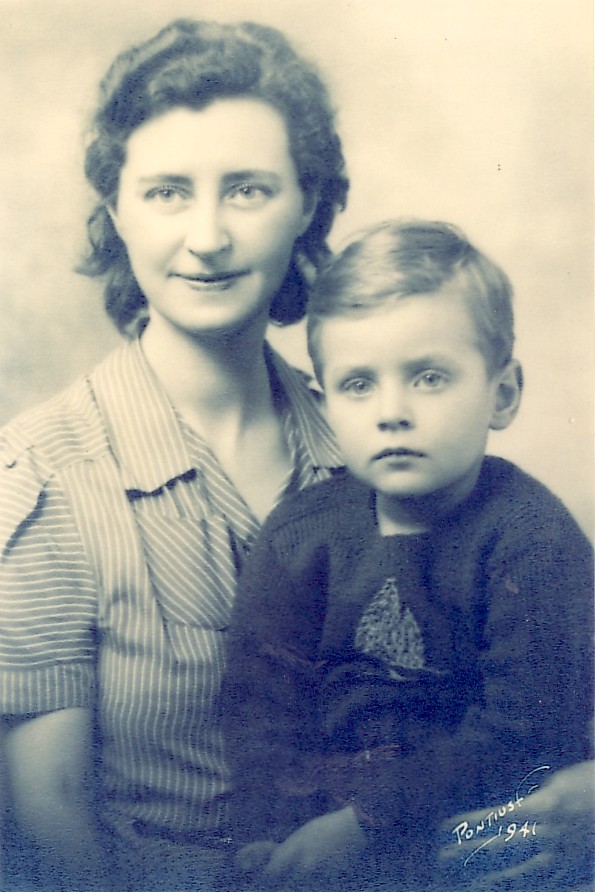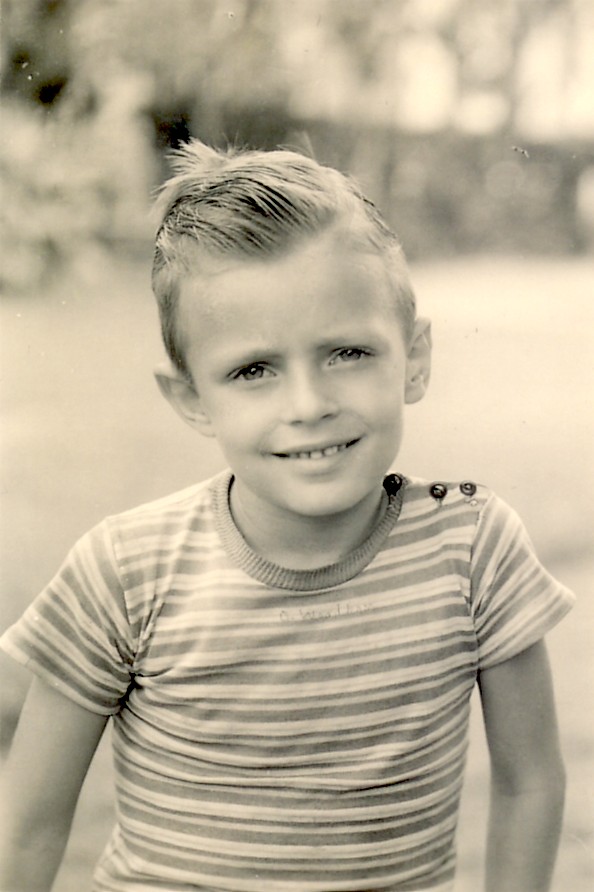|
From the book, "Santo Tomas" by Frederic Stevens: Gregory Clyde Woodham Madge Schumaker Woodham (1905 - 1995)  Baguio about 1939 or 1940  smalltown, Indiana  probably taken April 1942 by Greg Woodham Madge and Howard Woodham moved from Korea (they married there where he was a mining engineer and she a school teacher) to Baguio and Benguet mining in June of 1937. I was born 3 months later. We fled Baguio Dec. 20th 1941 for Manila. Dad joined the army as a civilian and went to Corregidor Jan 1st and then to Cabanatuan and died with the sinking of the Arizan Maru. Mom and I were escorted to Santo Tomas in mid January 1942 and lived in the annex with many others in a large room next to the Fisher family. Mom had a camp-built wooden bed whose cracks the bed bugs liked. We had a shanty behind the annex that we shared with the Elliots. Mr. Elliot often slept there. Katherine (Kaye) Dana was my mother’s cousin who was also interned at STIC. I remember playing a lot of marbles and Lionel Fisher telling me I owed him half of my winnings so I dumped them in a drainage ditch before we left for Leyte after liberation. We drained the garden ponds with #10 cans for the fish in them. I kept one fish under our shanty till it came up missing. Mom wanted to eat it but let me keep it until someone else found it. I caught lizards in the back wall cracks and raced them in competition by tying a string around them just in front of their rear legs. Japanese guards often gave me a rice ball when they walked between the guard towers along the wall approximately every hour. A barbed wire fence was set inside the wall and gardens were planted between them by the internees but no one else was supposed to be in there. On May 24, 2022 I received the following that Greg Woodham wrote: My mother and I were escorted to Santo Tomas Jan. 5th, 1942. I was 4 1/2 yrs old. We were assigned to the Annex (Rm 62 I learned yrs. later). We were assigned to a space outlined on the concrete floor in chalk-@7’x7’ my mother said. This was to be our ‘space’. We slept on the floor as best we could. I don’t recall how long, but what seemed to be a pediatric hospital bed showed up. It was metal with springs around the inside edge attached to a central metallic mesh. I could jump up and down on it and it held. My mother forbid it, fearing it might break and then what? My mother’s bed was camp made. 3 or 4 one x 10s nailed to a 2/4 at each end and supported by 2/4 or 4/4 legs. She had a thin mattress laid on that. As reported, bedbugs infested it also. She would use boiling water in the cracks to try and kill them. It must not have been effective as she used it frequently. I didn’t have any trouble with bedbugs in my bed. The adults must have talked about this all the time. I had more important things to do — like marbles!. (now moving right along...) Mom got Dengue Fever and I was sent out to a Catholic Convent while she recovered. I was scared I wouldn’t see her again. I learned the Lord’s Prayer there and was fearful of what might happen to me if I didn’t memorize it. I recall picking grains of corn out of the “slop” in a pig pen that the Japanese kept for themselves. I remember bean sprouts on my plate and a watery soup and not liking okra and egg plant but liking fried bananas. I never wore shoes – always barefoot. Mom insisted on afternoon naps to conserve calories and I did plenty of name calling at the other kids when Mom left the room. We cut down a banana tree with the Elliots and chopped it up and boiled and ate it. There was morning inspection and everyone lined up in front of our room and bowed to the Japanese inspectors. Some people were slapped for an offense – my mother said it was usually for not having the “right attitude”. I couldn’t figure what that was until later. For a long time I worried that I might get slapped for something that I didn’t do. I was scared that I might be taken away when the Japanese soldiers with bayonets on their weapons burst into our room and wanted to know where I had been. Peanut oil had been stolen from their storage by some of the kids. My mother assured them that I had been with her all day. I was always on the lookout for food to bring home. The Japanese killed a caribou for themselves up on the front lawn by the ball fields. They took everything but I managed to get a piece of the hide from which Mom and I had soup I think. I liked to watch the B-17’s fly over even though the Japanese threatened to make us look at the sun all day if we looked up. The fight seemed to be all up there with the bursting shells and smaller planes flying about the lumbering bombers. I never saw a U.S. plane hit though I saw a Japanese pilot plummet to the ground when his parachute didn’t open. They had a memorial display with fireworks for a famous pilot of theirs who was shot down. My mother gave a middleman her wedding ring for 2 kilos of rice the day before we were liberated. Fortunately the transaction didn’t get done and her ring was returned. Two P-51s came over the camp at tree tops in the late afternoon and at at 9 pm my mother awakened me gleefully with “They’re here! A tank is out front”. She took me to see it and it seemed huge and impregnable. Flares were falling, lighting up the night and people were talking excitedly. The next morning I went out and panhandled the GIs in their fortifications [bales of raw rubber piled in semicircles the Japanese had made for their own defense]. I heard a hated Japanese officer had been killed and his body was up on the front lawn and everybody was spitting and kicking it. I wanted to get in on it but my mother refused. The Japanese shelled our camp from the Walled City and I searched for shrapnel in the rubble when the main building was hit. I was out in the plaza in front of the main building a lot as the GIs were there and they piled up a lot of Japanese weapons there I liked to look at. They also brought an occasional Japanese POW in just a loin cloth sitting on the ground cross legged with his hands tied behind him. When a shell would be heard coming in everyone got under a Jeep or ran for the front door of the main building if close enough. There was also a sniper in the top of the main building who shot several people and had everyone scared to go out till they found him. I hung around the GIs a lot and they all wanted to talk to my mother. I dumped my marbles and we flew a DC-3 to Leyte and sailed to San Francisco where I saw my breath for the first time. We took the train to Columbia City Indiana, my mother’s home town, since my father, from Seaview Washington had been lost. My mother became an honored school teacher there and I continued looking for food—hunting squirrels, rabbits, frogs, fishing and raising pigeons and later settling in Indianapolis as a psychiatrist. My wife Ruth and I now live in Sanibel, Florida. Greg Woodham rwoodham3@comcast.net  or would like to be added to my POW/Interneed e-mail distribution list, please let me, Tom Moore, know. Thanks! |